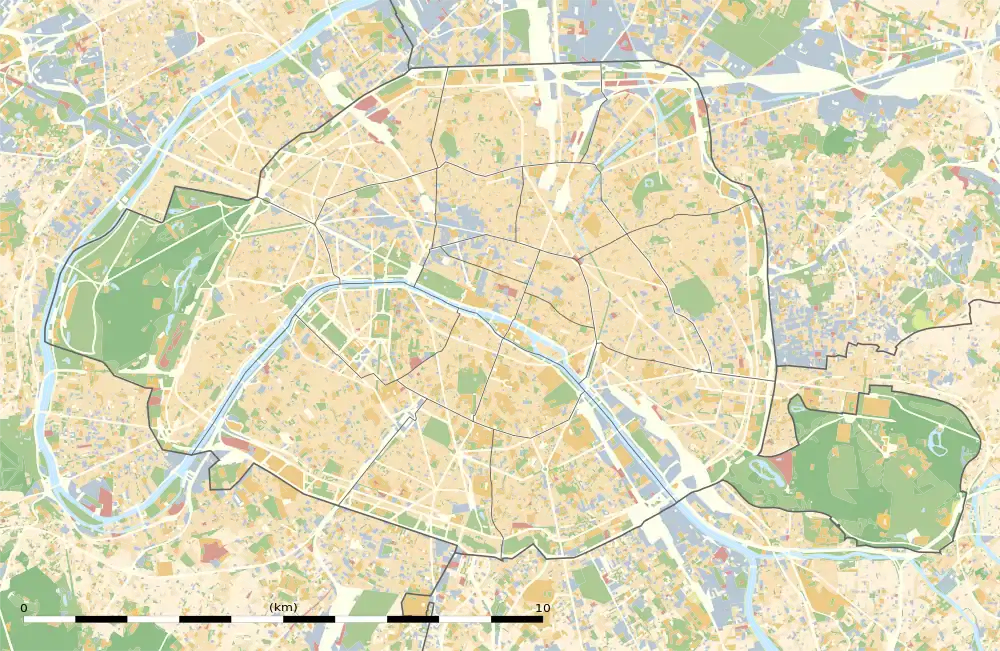Rue de Ménilmontant
Rue de Ménilmontant is a street which runs through the 20e arrondissement of Paris, France.[1]
 Rue de Ménilmontant | |
 Shown within Paris | |
| Former name(s) | Chemin du Ménil-Mautemps
Chaussée ou avenue de Ménilmontant |
|---|---|
| Length | 1,230 m (4,040 ft) |
| Width | 13.7 m (45 ft) |
| Arrondissement | 20th |
| Quarter | Belleville Saint-Fargeau Père-Lachaise |
| Coordinates | 48°52′4.79″N 2°23′12.91″E |
| From | 2, boulevard de Belleville 152, boulevard de Ménilmontant |
| To | 105, rue Pelleport |
History
The street, formerly a chemin (path), took its name from the hamlet of Mesnil-Maudan, that it led to, in the thirteen century. In 1732 the street was altered to be less steep, in 1733 it was made wider and in 1734, by order of the King, trees were planted on both sides.[2] From 1777 to 1806 it was separated in three parts. The first part between rue de la Folie-Méricourt and rue Popincourt was called rue du Chemin de Ménilmontant, the second part ending rue Saint-Maur was called rue de la Roulette, the third and last part was called Haute-Borne. Since 1806 the whole length has been entirely known as rue de Ménilmontant.[3] In 1860 Baron Haussmann integrate the village of Ménilmontant into Paris, making rue de Ménilmontant a street of Paris.
Name origin
The word mesnil (from the latin masnilium) meant country house and was also sometimes used to designate a hamlet. The name later became Mesnil-Mautemps then Mal-Temps and finally Mesnil-Montant,[4] probably due to the steepness of the street (montant meaning climbing).[2]
References
- Jean La Tynna (1812). Dictionnaire topographique, étymologique et historique des rues de Paris (in French). J. de La Tynna.
- J. De Marles (1838). Paris Ancien et Moderne ou Histoire de France (in French). p. 238.
- Félix Lazare (1844). Dictionnaire administratif et historique des rues de Paris et de ses monuments (in French). F. Lazare. p. 441.
- Jacques-Maximilien Benjamin Bins de Saint-Victor (1827). Tableau historique et pittoresque de Paris depuis les Gaulois jusqu'à nos jours (in French). Gosselin. p. 1150.